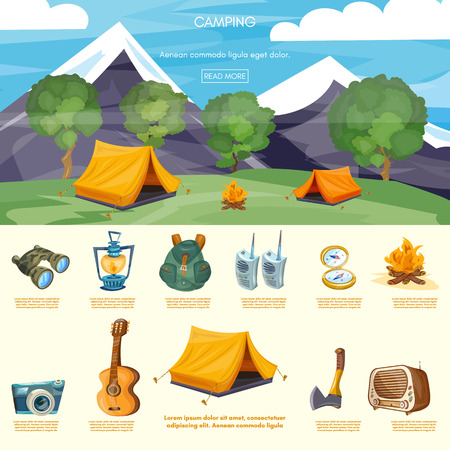Tent impacts are a fantastic method to shield your tent floor from abrasions and extend its functional life. Mostly all equipment manufacturers supply their very own brand-specific impacts that are developed to match their specific tent designs.
What does it mean to go glamping?
This customized strategy offers ease of setup and lessens the threat of rain seeping in through the seams.
What are they?
Camping tent footprints (likewise referred to as outdoor tents ground sheets or under tent pads) offer a layer of security in between the base of your tent and the exterior atmosphere. They protect your camping tent from sharp items, wetness, and rough surface areas.
A lot of camping tent producers use their own well-known footprints designed to fit seamlessly with their designated sanctuary models. Nonetheless, these are generally pricey and fairly hefty contrasted to DIY options like Polycryo or Tyvek.
Impacts are generally made from sturdy, water resistant products such as polyurethane, nylon or silnylon. For ultralight backpackers seeking to minimize pack weight, there are additionally lightweight, high-strength choices made from Cuben Fiber (Dyneema). It's important to select a footprint that's slightly smaller sized than your camping tent to prevent rainwater from trickling down the sides of your shelter and funneling below you while you rest-- nobody wants to get up in a puddle! A footprint is a beneficial addition to any type of outdoor camping trip. It assists make certain a long life expectancy for your outdoor tents while adding convenience and satisfaction.
How crucial are they?
Tent impacts shield the base of your tent from abrasion and dampness, assisting to expand its life expectancy. They're usually made from water-proof and dirt-resistant materials like polyethylene or a light-weight oxford polyester, though the denier of the textile will differ (the higher the denier number, the thicker and burlier).
Most footprints are made to precisely match the shape of your camping tent's flooring, which helps lessen material waste. Lots of have grommets or loopholes whereby you can weave guylines for stress and risks, making certain that the impact is safely held down.
If you camp in rough terrain or locations where there's a great deal of downed branches and sharp rocks, a camping tent footprint is well worth the added weight and mass. Yet if you regularly camp in completely dry, sandy or rough conditions, a footprint might be excessive. A tarpaulin is a better option in that instance.
Do you typically load one?
If you're camping on a very flat surface area where rocks and sticks aren't a problem, a tent impact probably isn't needed. If you are in the backcountry with a great deal of rough surface, a footprint can make life a lot easier.
Footprints are generally sized somewhat smaller sized than the base of the camping tent. That's due to the fact that a larger impact would capture rainfall and funnel it under the camping tent, where you could get up in a pool.
However, impacts can be expensive and hefty if you buy one from the supplier of your outdoor tents (the Big Agnes Tiger Wall surface UL 2 impact, as an example, costs $70 and considers six ounces). You can conserve cash and weight by making your own do it yourself footprint by cutting an item of Tyvek or various other waterproof fabric to the precise measurements of your shelter. You can even include grommets for easy accessory. The major benefit of a footprint is that it helps to secure the flooring of your backpacking tent from rough elements such as rocks and twigs.
Just how do you keep them clean up?
A maker's impact can add considerable weight to your sanctuary system and if you're an ultralight backpacker attempting to conserve every ounce, it might not be worth it. Consequently, many backpackers will make use of a do it yourself groundsheet that's made out of something like Tyvek or Polycryo and cut it to dimension for their outdoor tents footprint.
This option is reasonably cheap and will secure your outdoor tents from dampness, rocks, thorns, camping tents luxury sticks, and so on, while additionally aiding to keep the bottom of your camping tent completely dry.
If you do choose to purchase a footprint, make sure it's designed specifically for your particular camping tent as this will help in reducing water merging around the sides of your sanctuary. As an example, if your outdoor tents impact is as well big and extends past the edge of your rainfly, it will collect rains which can permeate right into lighter-weight camping tents and possibly wear down the flooring. Make certain it fits your camping tent relatively comfortably to prevent this.
Are Bell tents waterproof?
